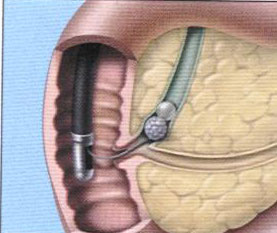 Endoscopic retrograde cholangiopancreatography (ERCP) is used to diagnose and treat conditions of the bile ducts, including gallstones, inflammatory strictures (scars), leaks (from trauma and surgery), and cancer.
Endoscopic retrograde cholangiopancreatography (ERCP) is used to diagnose and treat conditions of the bile ducts, including gallstones, inflammatory strictures (scars), leaks (from trauma and surgery), and cancer.
Researchers from Chiba University in Japan used shakuyaku-kanzo-to (TJ-68) to suppress spasms of the small intestine during ERCP procedures.
In Chinese and Japanese herbal medicine, shakuyaku-kanzo-to, which contains white peony (Paeonia officinalis) root and licorice root. The roots and flowers of P officinalis are used in European herbal medicine, although the German Commission E does not approve this plant for medicinal use.
First, the details.
- 50 patients with duodenal (intestinal) spasm participated in this study.
- 5 grams of TJ-68 (manufactured by the Tsumura Co, Tokyo) was dissolved in saline and sprayed slowly onto the duodenal papilla (where the bile ducts enter the small intestine; see photo).
- The times until the spasm was suppressed and then recurred were recorded.
And, the results.
- 76% of the patients experienced suppression of duodenal spasm.
- The onset of effect averaged about 2 minutes, ranging from 50 to 182 seconds.
- The duration of antispasmodic effect was about 10 minutes, ranging from 7 to 21 minutes.
The bottom line?
The authors concluded, “Direct spraying of TJ-68 on the duodenal mucosa suppressed duodenal spasm, and it may be useful during ERCP when anticholinergic agents are contraindicated.”
12/8/08 18:46 JR